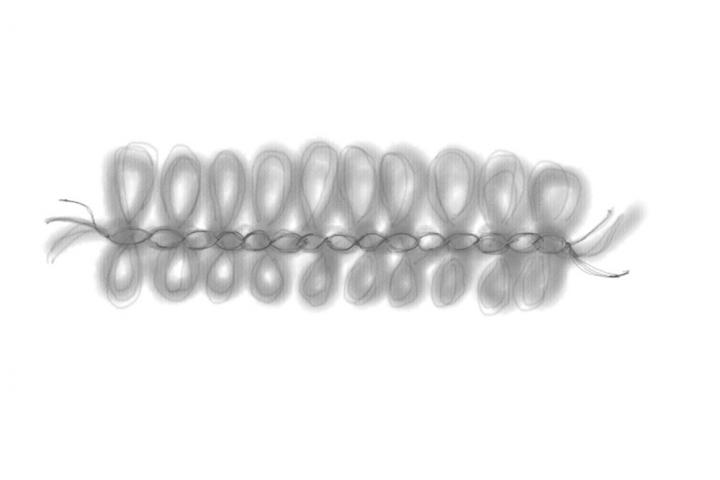Tissu éponge
French
Tissu éponge
Le tissu éponge est un tissu très absorbant, basé sur l'armure toile. Il se fabrique en utilisant deux fils de chaîne et un fil de trame : le premier fil de chaîne, dit fond constitue l'ossature du textile, le second appelé effet ou de bouclette forme une superficie bouclée. La chaîne de fond est travaillée avec une plus grande tension que celle de bouclette, qui avec l’utilisation de fils (généralement de coton) à torsion douce donne au tissu le pouvoir de retenir beaucoup d’eau. Le tissu peut être de type simple ou double selon si les bouclettes sont présentes sur une ou deux faces du tissu. Le plus utilisé est le type double pour sa qualité d’absorption maximale d’eau. Dans le cas des chiffons utilisés pour le nettoyage, les fibres sont normalement synthétiques.
Anglais
Terry, terrycloth
Terry is an absorbent fabric based on a plain weave, which has an additional set of loops woven through the surface of the fabric. The loops are left uncut to form pile on the surface of the fabric, which is what gives terry the distinctive looped surface texture on both sides. The added surface area increases the absorbency, making terry ideal for towels of all sorts. The longer and more densely packed the loops, the greater the absorbency of the fabric. Terry is used to make towels, bathrobes, and absorbent headbands. The word "terry" derives from the French word "tiré", which means pulled (referring to the loops pulled from the fabric base).
Dutch
Badstof
Badstof (spons) is een absorberend weefsel gebaseerd op de vlakke binding waarin een set van lussen wordt geweven doorheen het oppervlak van het weefsel. De lussen worden niet doorgesneden. De hierdoor toegevoegde oppervlakte verhoogt het absorptievermogen en maakt het tot een ideale handdoek voor verschillende doeleinden. Hoe langer en hoe dichter de lussen tegen elkaar liggen, hoe groter de absorberende kracht. Badstof wordt verwerkt tot handdoeken, badjassen en absorberende hoofdbanden.




